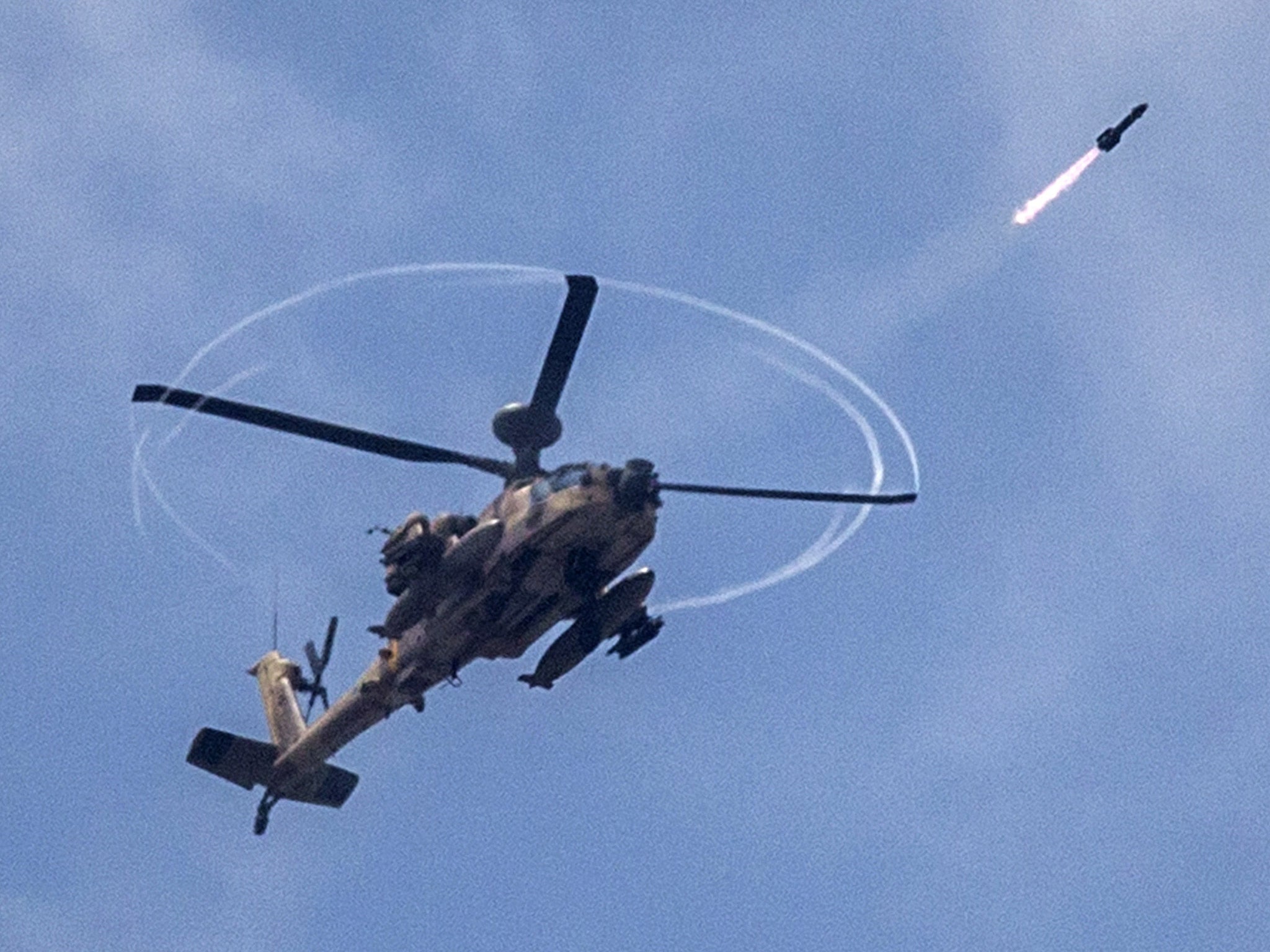Israel's attack on Hezbollah is a case of shoot first, ask questions later
An Iranian general and six Hezbollah officers have been wiped out by helicopters near the Syrian city of Quneitra. But what were they doing there?


Your support helps us to tell the story
From reproductive rights to climate change to Big Tech, The Independent is on the ground when the story is developing. Whether it's investigating the financials of Elon Musk's pro-Trump PAC or producing our latest documentary, 'The A Word', which shines a light on the American women fighting for reproductive rights, we know how important it is to parse out the facts from the messaging.
At such a critical moment in US history, we need reporters on the ground. Your donation allows us to keep sending journalists to speak to both sides of the story.
The Independent is trusted by Americans across the entire political spectrum. And unlike many other quality news outlets, we choose not to lock Americans out of our reporting and analysis with paywalls. We believe quality journalism should be available to everyone, paid for by those who can afford it.
Your support makes all the difference.Very occasionally, the Israelis go for the jugular. Their helicopter attack on “terrorists” near the Syrian city of Quneitra at the weekend certainly drew aside the curtain of Hezbollah-Iranian assistance to President Bashar al-Assad’s regime in Damascus. An Iranian general and six Hezbollah officers were wiped out in the attack, including Jihad Moughniyah – son of Imad Moughniyah, kidnap organiser of Western hostages in the 1980s and himself an assassination victim.
Hezbollah funerals are almost as emotional as victory parades – in Shia theology, they might almost be counted of equal importance – and after Moughniyah Snr’s own massive obsequies in Beirut’s southern suburbs in 2008, Jihad and his comrades were certain to receive on Monday the appropriate gestures of honour and defiance which define Hezbollah’s narrative of “resistance” to Israel. Only, of course, we do not yet know exactly what Iranian General Mohammed Ali Allahdadi and his Hezbollah companions were doing in the tiny Syrian village of Mazraat Amal.
A “field reconnaissance mission”, according to the Iranian Revolutionary Guards Corps (IRGC) in Tehran; General Allahdadi was “helping the [Syrian] government fight Takfiri-Salafist terrorists”. Which was pretty much the Hezbollah line, even though the Israelis claimed they were all “terrorists” themselves. Which just about sums up the preposterous – but immensely bloody – nature of the war. After all, if Israel had killed seven Isis commanders, they would still have anointed their victims as “terrorists”, even though the “terrorist” Isis would love to have killed the Iranian and Hezbollah men themselves.
For the Israelis and Americans – the two nations can scarcely be spoken of apart in the Middle East – both Isis and their Iranian-Hezbollah enemies are of the same evil stock. Mr Assad, of course, hasn’t been the target of quite such opprobrium these past few months.
The “Takfiri-Salafist terrorists” about whom the IRGC spoke are obviously the Isis and Nusra and al-Qaeda operatives who receive their encouragement, funding and spiritual aspiration from a country called Saudi Arabia – not the Saudi government, heaven forfend, but individual Saudis and other Gulfis who, true to the 17th-century Wahhabi conscience which governs the great kings and princes of Arabia, believe Mr Assad’s enemies represent a return to the high morality, dignity, etc, of very early Islam.
Given the IRGC’s 2,000 men in Syria and the Afghan Shia recruits in Mr Assad’s forces – whom I’ve seen with my own eyes – not to mention the thousands of Hezbollah who have fought (and died) for Mr Assad, we can safely assume that General Allahdadi and Master Jihad were indeed trying to keep the lower slopes of Golan safe from Isis and in Mr Assad’s hands.
Whether or not they were also reconnoitring those same foothills with a view to staging attacks into Israel is a moot point. They probably have enough fighting on their hands right now, but since the Israeli-occupied and annexed Golan Heights are in fact part of sovereign Syria, it isn’t hard to see how Hezbollah might wish to boast – in the future – that they can extend their “resistance” credentials from Lebanon to Golan.
In the meantime, we can only marvel at the contradictions. First Mr Assad was a “terrorist”. Then the “terrorist” Hezbollah went to fight for him. Then “terrorist” Iran turned up to do the same. In Iraq, Iran fought alongside US-supported Iraqi forces against the “terrorist” Isis, losing Brigadier General Hamid Taghavi – a close colleague of Allahdadi – to an Isis sniper in Iraq in December. Now the Israelis – “terrorists” in the eyes of the IRGC, Mr Assad and Hezbollah – have killed “terrorists” Allahadi, Moughniyah Jnr and their mates. Maybe historians have to sort that one out.